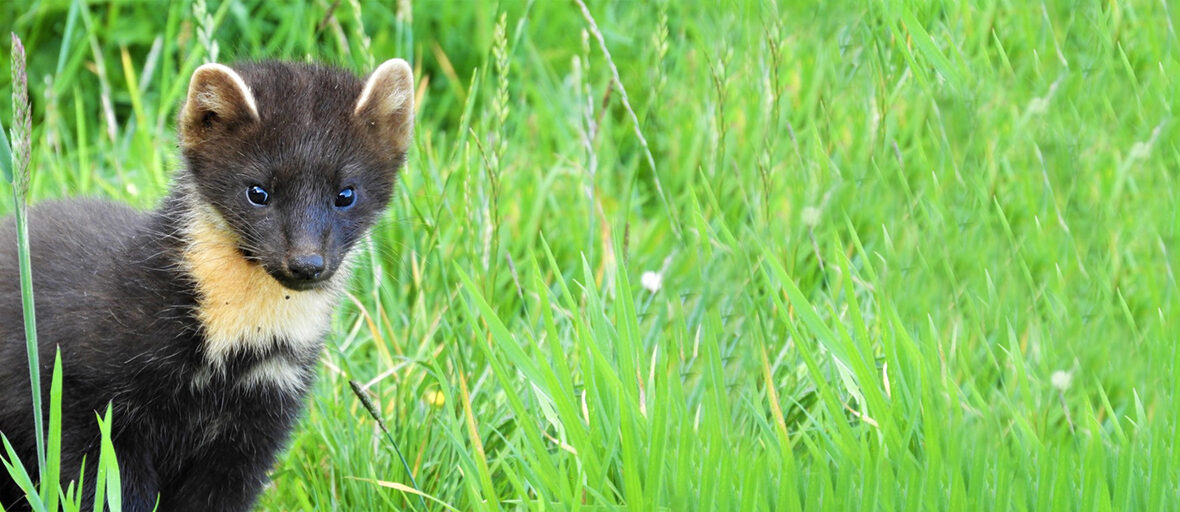
The pine marten, aka European pine marten, European marten, pineten, baum marten, or sweet marten, can be found throughout Europe and into Asia, and the Middle East. They tolerate a wide range of habitats such as deciduous, coniferous, and mixed forests, shrublands, younger forest plantations, grass and heather moorlands, coarse grassland, and border habitats. Even though they face the threats of hunting, trapping, and poisoning these martens are abundant and have a stable population. Therefore they are listed as Least Concern by the IUCN.
First the Stats…
Scientific name: Martes martes
Weight: Up to 3.1 lbs.
Length: Up to 2.2 feet, plus up to a 6.4 inch tail
Lifespan: Up to 18 years
Now on to the Facts!
1.) Martens belong to the mustelid family along with minks, otters, badgers, weasels, and wolverines, to name a few.
2.) Although mainly terrestrial (spend their life on the ground), these critters can climb trees with the best of them.
3.) Pine martens are primarily nocturnal (active at night), although they can be crepuscular (active at dawn and dusk) too.
4.) They take up residence in several dens. Tree hollows, squirrel nests, larger abandoned bird nests, and rock crevices are all utilized.
5.) When the temperatures drop too low, they will take up shelter underground, in burrows.
But wait, there’s more on the pine marten!
6.) Abdominal and anal scent glands are utilized for marking their territory.
7.) Pine martens are solitary and only come together to mate.
Did you know…?
Out of all the mustelids, the pine marten is the only critter with semi-retractable claws.
8.) A group of martens is referred to as a richness or richesse.
9.) Birds, rodents, lagomorphs, insects, and fruit are all on the menu.
10.) Martens are polygynandrous (promiscuous – mate with multiple partners).
But wait, there’s still more on the pine marten!
11.) Mating takes place between July – August.
12.) Females undergo up to an 8 month gestation (pregnancy) which includes a 7 month delayed implantation (when the female mates but holds onto the sperm for up to 7 months before officially becoming pregnant).
Did you know…?
These martens are named after the pine forests in which they predominantly live.
13.) The young, aka kits, are born altricial (blind and helpless).
14.) In up to 38 days, the kit’s open their eyes, and in up to 45 days they begin to consume solid food.
15.) Weaning takes place at about 6 weeks, and in up to 8 weeks, they emerge from the security of their den.
16.) These martens are believed to have come to Britain in 10,500 BCE, during the end of the last ice age.
Now a Short Pine Marten Video!
Be sure to share & comment below! Also, check out the Critter Science YouTube channel. Videos added regularly!
Want to suggest a critter for me to write about? Let me know here.
Some source material acquired from: Wikipedia & IUCN
Photo credit: iNaturalist



